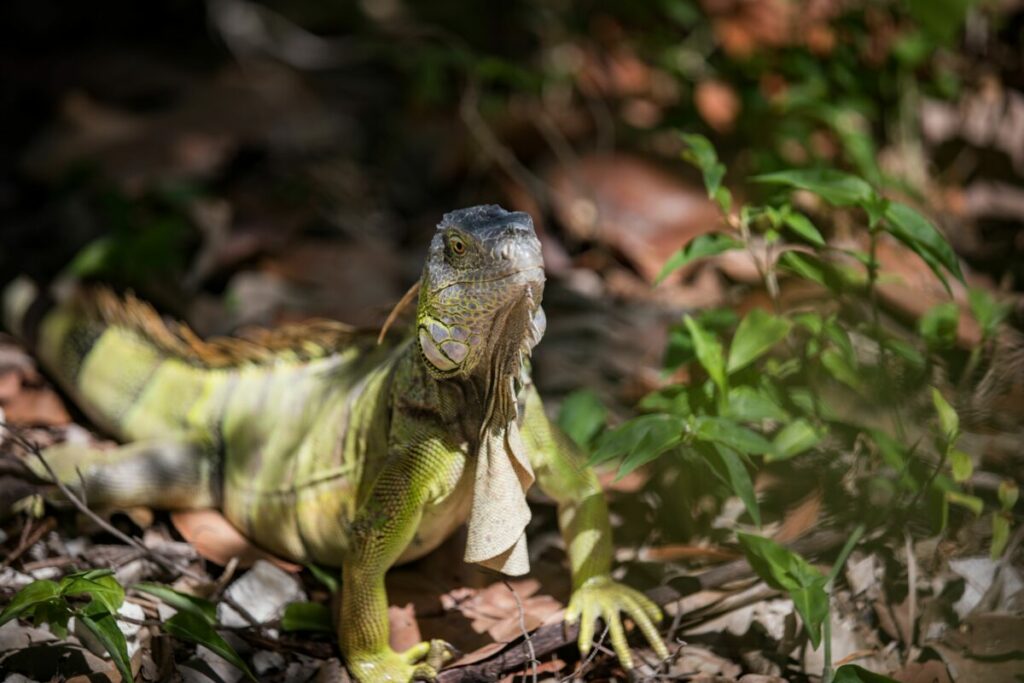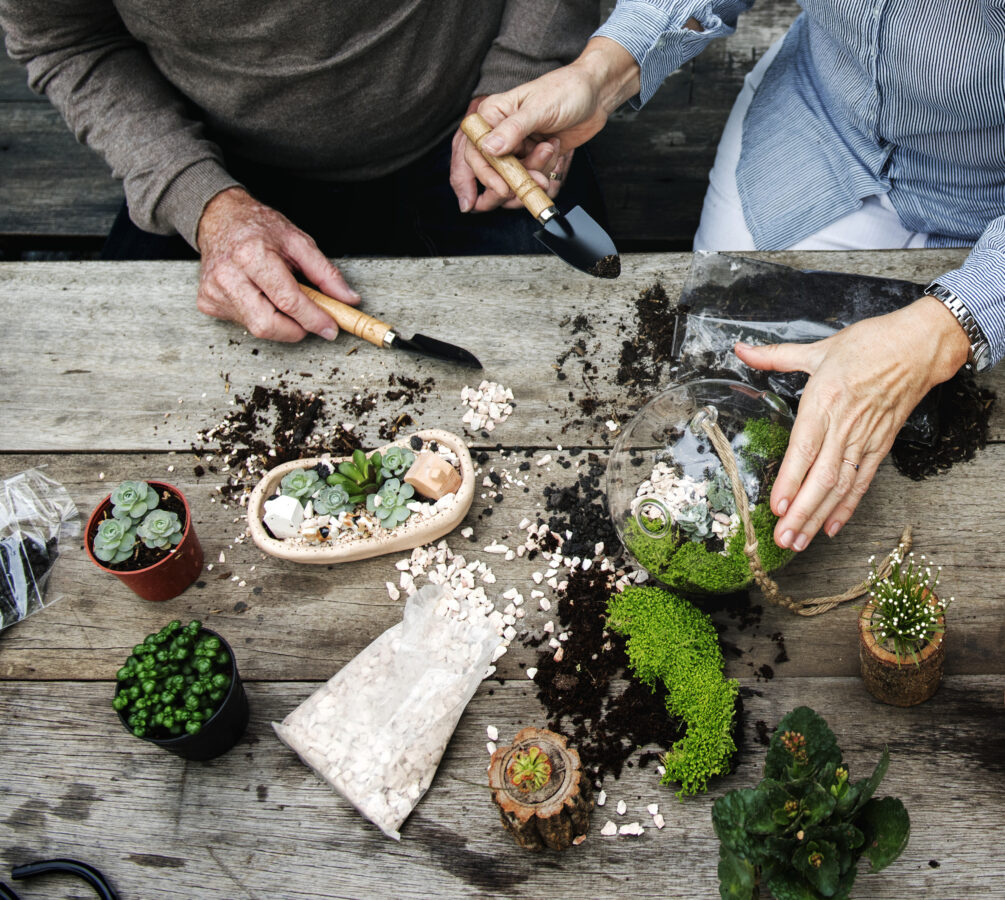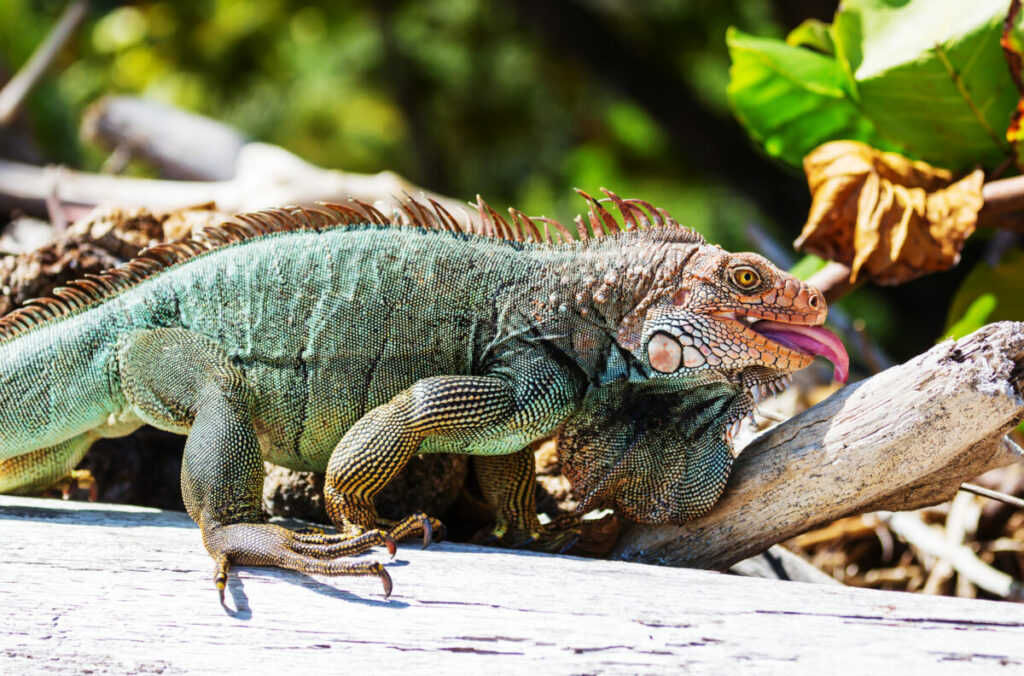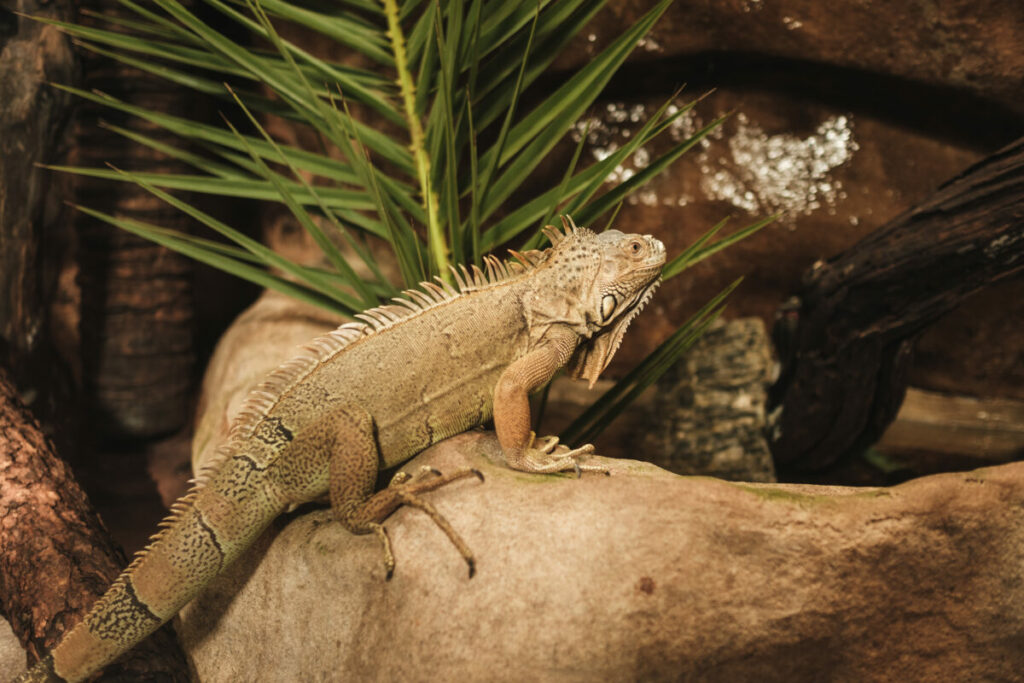Meet the extraordinary Rhinoceros Iguana, a massive reptilian creature sporting a unique, pseudo-horn on their snout, reminiscent of a rhinoceros. These fascinating lizards, colored in shades of brown, dark green, and grey, hail from the picturesque Caribbean island of Hispaniola. This threatened species can stretch an impressive three to five feet in length. So, what makes this creature so intriguing, and worth getting to know more about?
The Natural Habitat Of The Rhinoceros Iguana

Primarily found in the Dominican Republic, Haiti, and Hispaniola, the Rhinoceros Iguana favors habitats such as lowlands, scrub woodlands, and coastal terraces. Sadly, deforestation and human encroachment have driven them to mostly occupy rock habitats and offshore islands, where interaction with humans is minimal. Being primarily diurnal creatures, they are quick to retreat at the slightest hint of danger, but don’t mistake this for cowardice, they steadfastly defend themselves with bites and powerful tail strikes.
Creating An Ideal Environment For The Rhinoceros Iguana
Space Requirements

From a young age, a Rhinoceros Iguana begins life in a 50-gallon tank, but as it grows, it will require custom-made housing. The perfect living quarters should be as high as the Iguana is long, to cater to their love for climbing. Add a few strong branches, and your rhino-loving lizard will be in climbing heaven.
Temperature and Humidity Concerns

Maintaining a consistent temperature of around 85 degrees Fahrenheit is vital for these reptiles as it aids digestion and disease resistance. Optimal methods of providing heat include under-tank heaters and heat lamps, but steer clear of heat rocks, which can cause skin burns. A daily misting or humidifier will preserve the ideal humidity level of between 95 to100 percent. Be sure to have a monitor that gauges both temperature and humidity scientifically to maintain these conditions.
Dietary Requirements Of The Rhinoceros Iguana

Naturally omnivorous, Rhinoceros Iguanas in the wild lean toward a diet filled with fruits, leaves, berries, and flowers. They play a significant role in their ecosystem thanks to the seeds they consume and expel. However, in captivity, their health largely reflects their diet, which should consist of a balance of phosphorus, calcium, and vitamin D3. You can achieve this by providing them with roots and shoots such as:
- Turnip greens
- Dandelion greens
- Mustard greens
Nourishing greens aside, Rhinoceros Iguanas adore treats, from blackberries and bananas to squash and zucchini. As a caution, be wary of offering spinach (it binds calcium) and never provide cat or dog food, which can cause kidney failure.
Importance Of Lighting For A Rhinoceros Iguana

Proper lighting is paramount for the health of a Rhinoceros Iguana, assisting in their Calcium absorption via Vitamin D3. Full spectrum bulbs offer this kind of lighting, but nothing beats the beneficial gifts of regular natural sunlight. Ensure that your pet enjoys these sunny benefits frequently to promote its overall health and happiness.
Related Resources:
So, if you’re a lover of unique reptilian creatures, the majestic Rhinoceros Iguana is undeniably worth knowing about!